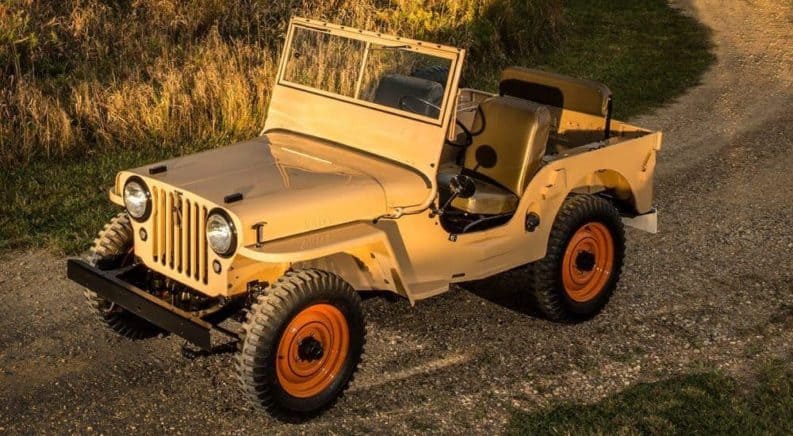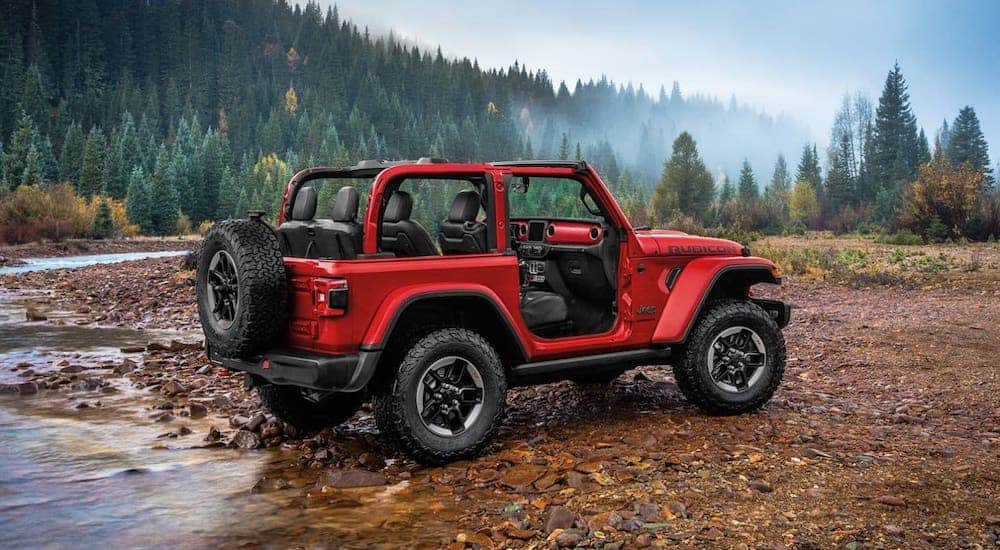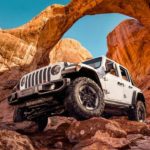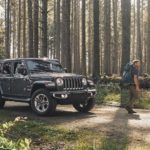We all know how Jeep got its start with the original military Jeeps of World War II. However, you might not be aware of just how convoluted Jeep’s history is and just how many changes of ownership and direction that this iconic brand has undergone over the years. With half a dozen changes of name and ownership and multiple brushes with bankruptcy, it is somewhat incredible that the Jeep brand has managed to survive until this day. So whether you are an old Jeep fan or a newcomer just searching “Jeep dealership near me” for the first time, it is time to look back at some of the high and low points of Jeep’s rich history.
The Opening Acts
Although the original Jeep was made famous on the battlefields of World War II, the company that built that iconic vehicle is far older. In fact, it can trace its history all the way back to 1902 and the founding of the Overland division of the Standard Wheel Company. The first of the many reorganizations that eventually led to the Jeep of today came just four years later when the Standard Wheel Company divested itself of its unprofitable automotive division, which subsequently continued independently as the Overland Automobile Company. But the very next year, Overland was bankrupt and on the verge of ceasing operations.
This could have been the end of the company, but instead, it marked a new beginning. One Overland dealer by the name of John Willys stepped in and put the company back on its feet, renaming the company Willys-Overland during the process. Unfortunately, John Willys would never see the greatest triumph of the company named for him, as he passed away in 1935.
Without John Willys, the Willys-Overland company crept along, producing moderately popular passenger cars. But it unexpectedly hit it big in 1940 when the United States Army announced a contract for a new light truck. No fewer than 135 different companies responded to this lucrative contract, and Willys-Overland actually failed to complete its prototype by the deadline. However, the winning company, American Bantam, was unable to produce the quantity of vehicles needed for the war. Facing an impending shortage of this critical vehicle, the United States Army tapped Willys-Overland and Ford to make up the difference.
Ironically, Willys-Overland and Ford managed to improve the original design so much that American Bantam was soon dropped from the contract, and its 2,675 vehicles were given to Russia. By the war’s end, Ford had produced 281,000 models, and the much smaller Willys-Overland had built an impressive 362,000. However, despite over producing the other companies, Willys-Overland did not actually invent the Jeep design or the Jeep name. Even the trademark vertical Jeep grille was actually one of Ford’s modifications to the original design.
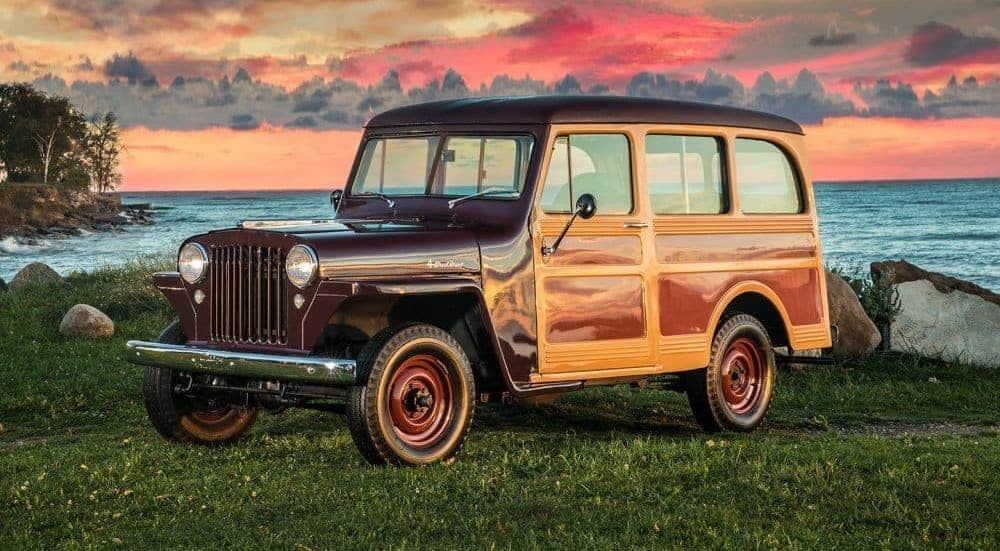
Jeep is Born
When the war ended, Willys-Overland had difficulties reentering the car market and instead focused on building civilian and military versions of its Jeep. These not only included the significantly upgraded CJ and M38 Jeeps based on the wartime design, but also heavily modified variants such as the somewhat ungainly Jeep Station Wagon and the surprisingly stylish Jeepster convertible. However, Willys-Overland’s use of the Jeep name and design found the company entangled in multiple lawsuits from Ford, American Bantam, and even the Federal Trade Commission. But possession is nine-tenths of the law, and in 1950, Willys-Overland was awarded full rights to the Jeep name after American Bantam went bankrupt.
In 1952, Willys-Overland finally managed to build an all-new compact car to supplement its Jeep production. But rather than growing the company, the new Willys Aero actually led to its purchase a year later by the larger Kaiser Motor Company, which needed a compact car to fill out its lineup. But ironically, despite being the catalyst for the purchase of the newly renamed Willys Motors, the Willys Aero was discontinued just three years later in 1955, leaving the company to focus on its far more popular Jeeps.
In 1963, the last trace of the original Willys-Overland name vanished when it was again renamed to Kaiser-Jeep. This was likely welcome news to local Jeep dealers everywhere, as they could finally advertise the same name that was on their most popular product. But although its market niche and name had been set, the convoluted tale of the Jeep brand was far from over.
Musical Chairs
In the 1960s, a wide range of new products from Kaiser-Jeep began appearing on dealership lots, including the popular new Jeep Wagoneer SUV and the Jeep Gladiator pickup truck. But again, these new models caught the eye of a larger automobile manufacturer, and in 1970 Kaiser-Jeep was purchased by the American Motor Company. However, unlike previous owners, AMC saw no need to append its name to that of its new purchases and the company was renamed to simply Jeep. Under the guidance of AMC, Jeep continued to grow and introduced new models such as the Jeep Cherokee SUV. Further, 1973 saw the introduction of Quadra-Trac, the first automatic full-time 4×4 system, which helped set Jeep apart as the builder of some of the most capable off-road vehicles in the world. But while Jeep was doing well, AMC as a whole was struggling, and in the late 1970s, it turned to the French automobile manufacturer Renault to shore up its finances.
As Renault acquired an ever-larger share in AMC, it pushed for a complete refresh of the Jeep lineup. The new vehicles included an innovative unibody Jeep Cherokee, a closely related Jeep Comanche pickup truck, and an all-new Jeep Wrangler to replace the aging Jeep CJ. While Jeep had already had a solid selection of vehicles before the refresh, these three new designs catapulted it ahead of the competition and made the brand stronger than ever before. But just as these changes finally reached local Jeep dealerships, Renault decided that AMC was taking up too much of its money, and in 1987, Renault sold its majority stake in AMC to Chrysler. But as a sign of just how far the Jeep brand had come over the years, this time, it was the Jeep name that was preserved while the AMC name was retired.
Modern Jeep
With a recently refreshed lineup of modern vehicles, the newly reformed Jeep was more popular than ever before. And while Chrysler did kill off the Jeep Comanche pickup so as not to interfere with the sales of its Ram truck division, it also pushed the development of a wider range of Jeep SUVs that helped position the company for the future. With new models including the Jeep Grand Cherokee, Jeep Commander, Jeep Liberty, Jeep Compass, and Jeep Patriot, the company took full advantage of the rising popularity of SUVs. And while there were now plenty of new Jeep models, the flagship Jeep Wrangler was not neglected either.
On top of continuing to improve the base platform, in 2004 Jeep introduced the first ever four door Jeep Wrangler Unlimited to make this highly capable platform more versatile than ever before. While Chrysler was bought out by the Italian automobile manufacturer Fiat in 2011, the reorganized Fiat Chrysler Automobiles has only made the Jeep brand stronger. This is due to them introducing technology and platforms from the European side of the company.
With the 2020 launch of the Jeep Gladiator marking the brand’s return to the truck market, it is clear that despite its convoluted past we can continue expecting revolutionary new vehicles to show up at Jeep dealerships for years to come.

